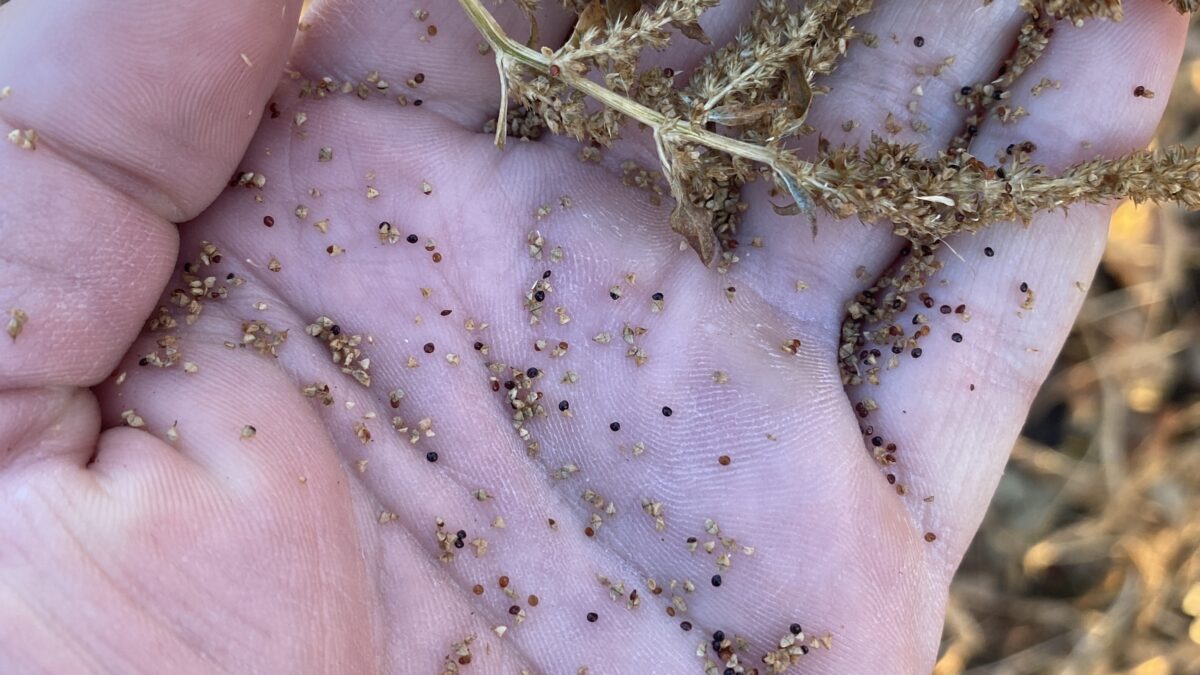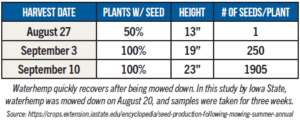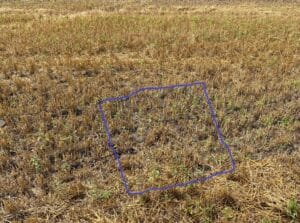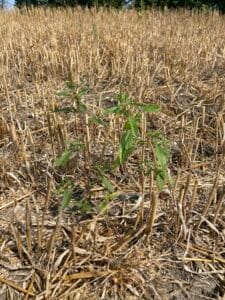How to Fill Your Seed Bank with Waterhemp in Only 20 Days!

One huge problem, often left unnoticed in the hustle of fall, is weeds going to seed in wheat stubble and unworked soybeans.
The rapid spread of glyphosate-resistant waterhemp across our region in the last ten years has become a big problem.
Most wheat is combined during the beginning weeks of August. An average first-killing frost date of October 10 gives weeds 60 full days of active growth to go to seed!
In a study from Iowa State done in 2004, a waterhemp plant will average 1905 seeds per plant only 21 days after the main stem is cut off (8/20 to 9/10).
And here is the problem I witnessed in fall 2024. While touring a grower’s field about ten days after wheat harvest, I noticed the fields had a green color. And it was all growing waterhemp! So we decided to count them.
Here’s what we found. On average, in a 5’x5’ area in the field, we found 111 waterhemp plants that were actively growing.
Using the Iowa State study, this would be 4.44 plants per square foot, or another 8,458 seeds going directly into the soil bank. With 43,560 square feet to an acre, an astronomical number of seeds were being put into the seed bank: over 360,000,000 seeds/acre.
It’s safe to say the seed bank in this field is now full for the next 10 years, even with perfect weed control!
This same problem is also prevalent in soybeans harvested before a killing frost. Likely, most of the waterhemp actively growing in a field germinated sometime during the summer and just waited below the canopy for its time to shine. Once the bean canopies begin to senesce during the first weeks of September, those weeds are off to the races. (This opens up another conversation, not for this article, but it is worth mentioning as a complete systems approach to our weed control strategies.)
We must eliminate the mindset that weeds can only be sprayed in June/July. Instead, we should look at weeds throughout the entire calendar year and chase them year-round! Consider post-harvest sprays as well as November/December for spring preplant control. Pre’s, PRE’s! Everyone needs to be putting down Pre’s. And finally, we need to standardize multiple modes of action and multiple postemergent sprays.
It’s no wonder that waterhemp has seen the massive spread it has, as its seed is perfectly sized to fit anywhere in a combine or the tread of our boots.
 Whatever broadleaf spray you want to apply in the fall, get it done! 2,4-D is cheap. Dicamba is cheap. Even tillage is cheaper than the measures we will need to employ to stop the spread in the coming years.
Whatever broadleaf spray you want to apply in the fall, get it done! 2,4-D is cheap. Dicamba is cheap. Even tillage is cheaper than the measures we will need to employ to stop the spread in the coming years.
Key Management Strategies:
- We have to spray every acre of wheat in the fall with a broadleaf herbicide, regardless of tillage!
- 20 days after cutting, an average waterhemp plant will have over 1,900 seeds per plant!
- The first average 28 degree killing temperature is 10/10 for the region, 60 days after most wheat combining is done.
- Left uncontrolled, it would only take 20 days for waterhemp to fill your seed bank for the next 10 years.











